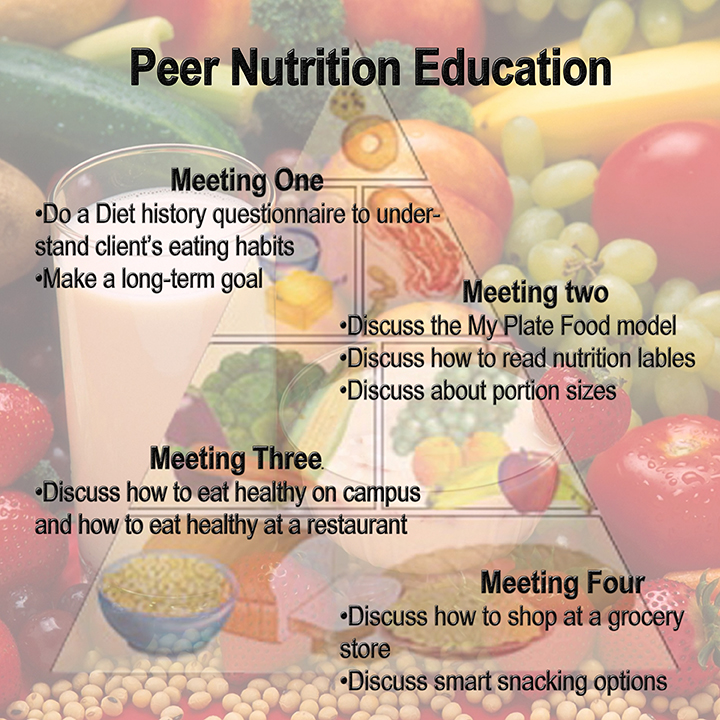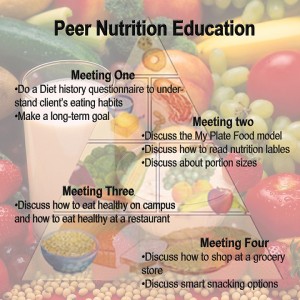With false advertising and dietary fads, knowing what is healthy and what is not can be confusing.
Students, faculty and staff who want an assessment of their health can take advantage of the Baylor Peer Nutrition Education program.
The program, which is free to the public, aims to help Baylor students assess their dietary goals and develop healthy eating habits.
Students can go to the fitness suite on the third floor of the McLane Student Life Center if they are interested in this program.
Van Davis, assistant director for fitness and nutrition education, said the program staff is made up of upperclassmen nutrition sciences majors.
All peer nutrition educators went through an application process with professors in the nutrition sciences department, Davis said.
“Five or six are selected each spring to start the practical part of their education in the fall,” Davis said.
Longview senior Rebecca Kennedy is a nutrition sciences major who has been a peer nutrition educator for a year. She typically sees 15 clients per semester, she said.
“We usually do one appointment a week,” Kennedy said. “They’ll come for four or five appointments. If they want to meet for longer, we can do that. We won’t push someone out if they want to learn something.”
Each meeting lasts 45 minutes to an hour, Kennedy said.
At the first meeting, Kennedy acquires general information about her client’s ideas on nutrition.
“We get to know the person and their eating habits and attitude towards food and what they want to get out of this experience,” Kennedy said.
She said she gives her clients basic nutrition information at the first meeting.
“We touch on nutrition basics like portion sizes and the My Plate Food model and how to read a nutrition label,” she said.
Kennedy said the My Food Plate model is the new version of the food pyramid.
“It’s a picture of the plate that explains what the plate should look with a balanced diet, a balanced meal,” she said.
Peer nutrition educators give their clients general knowledge in the beginning, but, Kennedy said, educators give more specific knowledge tailored to the client’s goals later on.
“Each week, we ask them to make a goal,” Kennedy said. “They have a long-term goal and short-term goal that they report back about each week. That’s how we see if they’re accomplishing what they want to.”
Kennedy said she enjoys her role as a peer nutrition educator because she can use her knowledge to help people.
She said the work she does now is pretty much her “dream job,” since she plans to become a registered nutritionist in the future.
“People are surprised by certain nutrition concepts,” she said. “People come back and say, ‘I thought about this all week and it’s really helped me.’ I love hearing people using what I teach them to make their life healthier.”
Peer nutrition educators are on a work-study program with the fitness department, Davis said.
Additional guidance and education for the educators, however, comes from Dr. Janelle Walter, the nutrition sciences program coordinator.
“They meet with Dr. Walters weekly,” Davis said. “The education part comes from Dr. Walters, who is mentoring them.”
Davis said at the beginning of the semester, 75 students were interested in seeing a peer nutrition educator.
But with busy schedules of their own, Davis said educators cannot see more than three or four clients at a time.
“Each semester, we see quite a bit of students, faculty and staff depending on how much our peer nutrition educators can take in,” Davis said. “We have several people on the waiting list.”
To clarify, the program is not for people with medical problems, Davis said. The program is for people who want to develop healthier eating habits.
Davis said all the educators in the program are “outstanding.”
“They are the top of their class,” Davis said. “These individuals are passionate about helping clients reach nutritional goals.”







